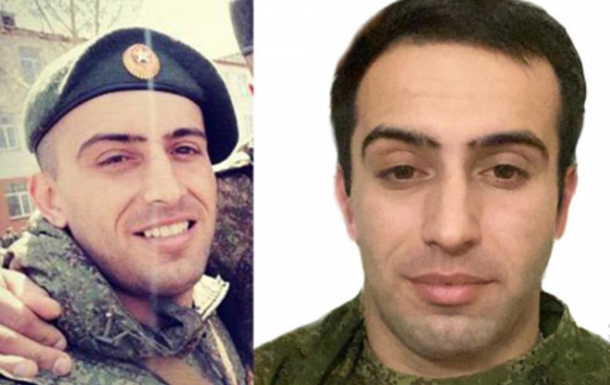While Asian Immigrants Work, Burglars Target Their Homes

© Celeste Noche for The New York Times


© Celeste Noche for The New York Times


© Kiana Hayeri for The New York Times


© Celeste Noche for The New York Times


Google is hosting a Customs and Border Protection (CBP) app that uses facial recognition to identify immigrants, and tell local cops whether to contact ICE about the person, while simultaneously removing apps designed to warn local communities about the presence of ICE officials. ICE-spotting app developers tell 404 Media the decision to host CBP’s new app, and Google’s description of ICE officials as a vulnerable group in need of protection, shows that Google has made a choice on which side to support during the Trump administration’s violent mass deportation effort.
Google removed certain apps used to report sightings of ICE officials, and “then they immediately turned around and approved an app that helps the government unconstitutionally target an actual vulnerable group. That's inexcusable,” Mark, the creator of Eyes Up, an app that aims to preserve and map evidence of ICE abuses, said. 404 Media only used the creator’s first name to protect them from retaliation. Their app is currently available on the Google Play Store, but Apple removed it from the App Store.
“Google wanted to ‘not be evil’ back in the day. Well, they're evil now,” Mark added.
The CBP app, called Mobile Identify and launched last week, is for local and state law enforcement agencies that are part of an ICE program that grants them certain immigration-related powers. The 287(g) Task Force Model (TFM) program allows those local officers to make immigration arrests during routine police enforcement, and “essentially turns police officers into ICE agents,” according to the New York Civil Liberties Union (NYCLU). At the time of writing, ICE has TFM agreements with 596 agencies in 34 states, according to ICE’s website.


Récidiviste de l’alcool au volant, Jean-Philippe Catellier, de Saint-Valérien, a vu le juge Yves Desaulniers suspendre son premier de conduire pour trois ans, en plus de lui imposer une amende de 2 000$, un don de 2 000$ et le respect d’une probation de 18 mois pour avoir conduit avec un taux d’alcoolémie du double de la limite permise, le 7 juin 2024.
La sentence découle d’une suggestion commune présentée par la procureure de la Couronne, Me Marie-Pierre Chicoine-Côté et l’avocate de l’accusé, Me Caroline Bérubé, vendredi dernier (7 novembre), au palais de justice de Rimouski.
L’accusé a plaidé coupable avant la tenue de son procès.
La sentence tient compte du taux d’alcoolémie de 170 milligrammes d’alcool par 100 millilitres de sang, plus du double de la limite de 80 mg et d’un antécédent en semblable matière en 2019.
« Les policiers ont reçu un appel pour signaler une conduite erratique. Ils ont intercepté le véhicule qui leur avait été décrit. Le conducteur avait les yeux vitreux et le regard vide. Les policiers lui ont demandé s’il avait consommé de l’alcool et il a répondu oui », relate Me Chicoine-Côté.
« Mon client a fait preuve d’introspection depuis les événements. Il a remis en cause son comportement et il est prêt à s’investir dans un suivi probatoire. Monsieur Catellier demeure à Saint-Valérien et il travaille à Rimouski. Nous vous demandons de lui permettre de faire la demande pour un antidémarreur sans délai. Il est un actif pour la société. Nous avons individualisé la peine », a plaidé l’avocate de l’accusé, Me Caroline Bérubé.

Le don de 2 000$ sera séparé à parts égales entre le CAVAC de Rimouski et la Fondation Santé Rimouski.


Russian war criminals can be held accountable. A Ukrainian court has found a Russian unit commander guilty of raping women during the occupation of the city of Makariv near Kyiv. Following a public prosecution by the Prosecutor General's Office, he has been sentenced to 12 years in prison.
Rape and any form of sexual violence are grave violations of the Geneva Conventions and are classified as war crimes.
On 7 March 2022, he and his brigade swept through the area, breaking into homes, looting, threatening, and killing civilians.
The commander, together with a subordinate, broke into a woman’s home, held her at gunpoint, and, under threat of execution, forced her into a neighboring house, where he physically assaulted and raped her.
The convicted man is a native of Makhachkala, who served as section commander and combat vehicle leader of the 9th Motorized Rifle Company, 37th Separate Guards Motorized Rifle Brigade (military unit 69647, Kyakhta, Buryatia, Russian Federation).
Makariv was occupied by Russian forces for several weeks but was liberated by the Armed Forces of Ukraine on 1 April 2022, during the counteroffensive. During the occupation, the town was about 40% destroyed, and 132 civilians were executed, as per Stratcom.
Russian troops destroyed many private and apartment buildings, and razed hospitals and kindergartens.
Since 2022, Ukraine has documented 190,000 Russian war crimes.


© Yonhap, via EPA, via Shutterstock


© Caroline Gutman for The New York Times


© Annie Mulligan for The New York Times
Les autorités anticorruptions ukrainiennes ont indiqué qu’elles avaient démantelé un système de corruption dans le secteur énergétique.
L’ancien ministre ukrainien de l’énergie et actuel ministre de la justice serait impliqué.
L’actuelle ministre de l’énergie a elle aussi démissionné.
Un proche de Zelensky, qui a quitté l’Ukraine, serait également impliqué.
[L'article En Ukraine, deux ministres ont démissionné après la révélation d’une affaire de corruption a d'abord été publié dans InfoBref.]


Members of Ukraine’s EU-backed anti-corruption agency and the FBI are coordinating actions in the 2025 top energy investigation, which involves the alleged laundering of $100 million, ZN.UA reports, citing its own sources.
Recently, representatives from both agencies met in connection with the case of Energoatom, Ukraine's sole nuclear operator.
According to investigators, the perpetrators demanded kickbacks amounting to 10–15% of Energoatom contract values. Contractors had to pay to avoid blocked payments or the loss of supplier status. Timyr Mindich, one of President Volodymyr Zelenskyy's closest associates, oversaw the operation of a so-called “laundromat”, where funds obtained through illegal means were laundered.
In the embezzlement case, five individuals have been detained, and seven alleged members of the criminal organization have already been formally charged. Among those searched were Justice Minister Herman Halushchenko, who has since resigned, and Mindich, who is hiding abroad.
A new FBI officer has recently arrived in Kyiv, and one of his first meetings was specifically focused on the Mindich case. The FBI representative works within the National Anti-Corruption Bureau of Ukraine under an interagency memorandum originally signed during the bureau’s founding.
The case highlights Ukraine’s commitment, with strong European Union support, to eradicating corruption at the highest levels of government. However, the investigation must yield results and lead to the arrest of jail officials involved in the scheme. The case is especially painful to ordinary Ukrainians, who continue to endure up to 12-hour blackouts following Russian missile attacks.
For comparison, the stolen $100 million could have purchased 27 Patriot missiles or 40,000 Sting interceptor drones.
After a brief technical pause that coincided with the US President Donald Trump administration, the document was re-signed following NABU Director Semen Kryvonos’s visit to the US. Since then, constant operational cooperation between NABU and the FBI has been restored for cases involving high-level corruption.


Détenu depuis le 7 mai 2025 à la suite d’une perquisition en matière de stupéfiants à Rimouski, Robert Arsenault, a plaidé non coupable à l’ensemble des accusations auxquelles il fait face, le 7 novembre dernier.
L’individu de 51 ans reviendra en cour, le 5 janvier prochain, afin de fixer une date de procès.
Il fait face à une nouvelle accusation pour laquelle le mandat d’arrestation a été exécuté au centre de détention de Rimouski, le 15 octobre. Il est accusé d’avoir volé divers articles dans un Super C de Rimouski, le 30 avril 2025.
Arseneault était en liberté sous condition au moment de son arrestation, le 7 mai 2025. Il est détenu depuis ce temps.
Son avocate, Me Maryse Beaulieu, avait demandé un report au 7 novembre afin de poursuivre son analyse de la preuve à la lumière des paquets scellés ouverts en septembre.
L’ouverture des scellés visait à connaître les motifs ayant mené à l’émission du mandat de perquisition menant à l’arrestation de Robert Arsenault, dans une maison de chambres située sur l’Allée du Rosaire, à Rimouski.
La perquisition a permis de saisir environ 45 grammes de cocaïne, 145 médicaments d’ordonnance, 45 grammes de cannabis illicite, divers équipements servant au trafic de stupéfiants et 800 $ en argent comptant.
Arsenault est accusé de possession de stupéfiants en vue de trafic et de possession d’une somme d’argent sachant qu’elle avait été obtenue de la perpétration d’une infraction.


Immigration and Customs Enforcement (ICE) is allocating as much as $180 million to pay bounty hunters and private investigators who verify the address and location of undocumented people ICE wishes to detain, including with physical surveillance, according to procurement records reviewed by 404 Media.
The documents provide more details about ICE’s plan to enlist the private sector to find deportation targets. In October The Intercept reported on ICE’s intention to use bounty hunters or skip tracers—an industry that often works on insurance fraud or tries to find people who skipped bail. The new documents now put a clear dollar amount on the scheme to essentially use private investigators to find the locations of undocumented immigrants.


© Matt McCann/The New York Times


© Matt McCann/The New York Times


William Keita, le seul des cinq accusés du meurtre au 2e degré (sans préméditation) d’André Bourgoin à avoir recouvré sa liberté pendant le processus judiciaire, est aussi le seul à contester sa citation à procès sur le chef tel que porté.
L’avocat de Keita, Me Martin Latour, fera ses plaidoiries au juge Yves Desaulniers, le 16 décembre, au palais de justice de Rimouski. Le magistrat aura ensuite à statuer sur la citation ou non de l’accusé à son procès sous ce chef ou sous un autre chef. Le décès d’André Bourgoin est survenu lors d’une altercation le 11 septembre 2024 à Mont-Joli.
Bernard-Briand Lewis-Philipps, Patrick Francis, Jerred-Xavier Taylor et Zachary Dryden ont été cités à leur procès à la fin de leur enquête préliminaire, le 24 octobre, au palais de justice de Rimouski.
Comme c’est généralement le cas au stade de l’enquête préliminaire, le contenu des témoignages et l’identification des témoins ont été frappés par une ordonnance de non-publication afin de ne pas corrompre le procès à venir qui se tiendra devant un jury.
Lorsque la citation au procès n’est pas contestée, l’enquête préliminaire permet à la défense d’interroger des témoins afin de se préparer pour le procès à venir.
Bernard-Briand Lewis-Philipps, Patrick Francis, Jerred-Xavier Taylor et Zachary Dryden ont assisté aux témoignages par Teams du Centre de détention de Rivière-des-Prairies. Les quatre ont renoncé à leur enquête sur remise en liberté. Ils seront donc détenus pour l’ensemble du processus judiciaire.
La détention préventive purgée avant l’imposition d’une sentence compte à 1,5 jour par jour purgé. Ils sont détenus depuis leur arrestation, le 11 septembre 2024.

Les cinq suspects sont accusés de meurtre au 2e degré et de port d’une arme dans un dessein dangereux.
La victime, André Bourgoin, a été identifiée comme un dirigeant du réseau de Mont-Joli lors de l’importante opération policière Oursin, menée en 2019, contre le trafic de stupéfiants reliés aux Hells Angels.


© Photo Illustration by Alice Lagarde; Source Photographs by Tierney L. Cross/The New York Times; Al Drago for The New York Times; Shutterstock


© Jovelle Tamayo for The New York Times


© John Hanna/Associated Press


© Toby Melville/Reuters


Chicagoans have turned to a novel piece of tech that marries the old-school with the new to warn their communities about the presence of ICE officials: 3D-printed whistles.
The goal is to “prevent as many people from being kidnapped as possible,” Aaron Tsui, an activist with Chicago-based organization Cycling Solidarity, and who has been printing whistles, told 404 Media. “Whistles are an easy way to bring awareness for when ICE is in the area, printing out the whistles is something simple that I can do in order to help bring awareness.”
Over the last couple months ICE has especially focused on Chicago as part of Operation Midway Blitz. During that time, Department of Homeland Security (DHS) personnel have shot a religious leader in the head, repeatedly violated court orders limiting the use of force, and even entered a daycare facility to detain someone.
3D printers have been around for years, with hobbyists using them for everything from car parts to kids’ toys. In media articles they are probably most commonly associated with 3D-printed firearms.
One of the main attractions of 3D printers is that they squarely put the means of production into the hands of essentially anyone who is able to buy or access a printer. There’s no need to set up a complex supply chain of material providers or manufacturers. No worry about a store refusing to sell you an item for whatever reason. Instead, users just print at home, and can do so very quickly, sometimes in a matter of minutes. The price of printers has decreased dramatically over the last 10 years, with some costing a few hundred dollars.
A video of the process from Aaron Tsui.
People who are printing whistles in Chicago either create their own design or are given or download a design someone else made. Resident Justin Schuh made his own. That design includes instructions on how to best use the whistle—three short blasts to signal ICE is nearby, and three long ones for a “code red.” The whistle also includes the phone number for the Illinois Coalition for Immigrant & Refugee Rights (ICIRR) hotline, which people can call to connect with an immigration attorney or receive other assistance. Schuh said he didn’t know if anyone else had printed his design specifically, but he said he has “designed and printed some different variations, when someone local has asked for something specific to their group.” The Printables page for Schuh’s design says it has been downloaded nearly two dozen times.


© Bradly J. Boner/Jackson Hole News & Guide, via Associated Press


© KTLA 5


© Anushree Fadnavis/Reuters


Le président américain a accordé des grâces «complètes, totales et inconditionnelles» à des proches et des militants républicains impliqués dans la tentative de renverser les résultats de l’élection présidentielle de 2020.
Ces grâces présidentielles ne concernent que les crimes fédéraux.
Or, aucun des graciés n’est actuellement accusé ni n’a été condamné pour un crime fédéral.
Cependant, deux des graciés sont poursuivis devant les tribunaux de plusieurs États.
La grâce pourrait les protéger contre d’éventuelles futures poursuites fédérales:
[L'article Donald Trump a gracié 77 personnes de façon préventive a d'abord été publié dans InfoBref.]


© Kevin Dietsch/Getty Images


© San Antonio Police Department, via Associated Press


Likenson Grégoire, 23 ans, accusé de tentative de meurtre relativement à une agression armée survenue le 25 avril 2024 à Sainte-Angèle-de-Mérici, conteste sa citation à procès. Son enquête préliminaire prévue pour cinq jours aura lieu du 23 au 27 mars 2026, au palais de justice de Rimouski, de manière commune avec la coaccusée Doxanne Maherline Racine.
C’est le juge de la Cour du Québec, James Rondeau, qui va entendre l’enquête préliminaire et qui devra statuer à la fin de celle-ci sur la citation à procès.
Son avocate, Me Kristina Markovic, a demandé que le procès soit précédé d’une enquête préliminaire puisqu’elle entend contester la citation au procès pour le chef de tentative de meurtre pesant contre son client.
Lors d’un précédent passage à la cour, Me Markovic, de la Capitale-Nationale, a aussi indiqué ne pas être en mesure de convaincre le tribunal de remettre son client en liberté pendant les procédures judiciaires.
Le juge a donc ordonné la détention de Grégoire jusqu’à la fin des procédures.
Rappelons que la détention préventive purgée avant l’imposition d’une peine compte à 1,5 jour par jour purgé. Grégoire est détenu depuis son arrestation le 25 avril 2024.
La procureure de la Couronne, Me Marie-Pier Chicoine-Côté, a déposé une nouvelle accusation de voies de fait graves en août 2024.
Grégoire faisait déjà face à une accusation de tentative de meurtre et à une autre de possession d’une arme prohibée.
Les policiers sont intervenus le 25 avril 2024, vers 9 h 30, concernant un homme de 31 ans ayant été blessé par arme à feu à Sainte-Angèle-de-Mérici. Une heure plus tard, le suspect a été interpellé à Notre-Dame-des-Neiges.

« La victime a été transférée vers un centre hospitalier afin de soigner des blessures sérieuses, mais qui ne mettraient pas sa vie en danger actuellement. Nous avons immédiatement déclenché une opération policière dans le but de localiser le véhicule suspect sur les différents axes routiers du Bas-Saint-Laurent », rapportait le service des communications de la SQ au moment des faits.
Un pistolet de calibre 9 mm a été saisi par les policiers. Le suspect et la victime sont connus des milieux policiers. Likenson Grégoire a notamment été reconnu coupable de tentative de meurtre pour des événements remontant à 2020.


© Carlos Barria/Reuters


A high-ranking Russian-appointed member of Luhansk occupation authorities has been found dead in occupied eastern Ukraine under unclear circumstances, according to Petro Andriushchenko, head of the Center for the Study of Occupation. Russian national Kirill Grekov, the so-called “Deputy Prosecutor General of the Luhansk People's Republic,” was reportedly discovered hanged in occupied Luhansk, as local authorities avoid commenting publicly on the case.
Petro Andriushchenko reported the discovery of Grekov’s body on 6 November. He stated that Grekov had been appointed by Moscow and was sent to the Russian-occupied territory to carry out key duties on behalf of Russian authorities. According to Andriushchenko, Grekov had tense relations with both local residents and so-called officials, often becoming entangled in conflicts that may have led to what he described as a “tragic end.”
Andriushchenko noted that Grekov’s death is being concealed from the public. Authorities of the so-called “LNR” have avoided making any statements about the incident, and no coverage has appeared in the regional occupation-controlled media. Obozrevatel confirmed that no information regarding Grekov’s death had been published by the “media” of the pseudo-republic.

Grekov’s last appearance on the “LNR prosecutor's office” website was on 23 August 2025.
Grekov, a Russian policeman from Rostov, was appointed to the “LNR” in late 2022 directly to the position of so-called deputy prosecutor. He is listed in the Myrotvorets database, which gathers personal information on Russians and collaborators involved in Russia’s war against Ukraine.
His appointment came just months after an earlier deadly incident in the same office. In 2022, the so-called then “LNR Prosecutor General” Sergei Gorenko and his deputy Yekaterina Steglenko were killed when an explosive device detonated inside Gorenko’s office. It remains unclear whether their deaths were the result of internal purges aimed at replacing pro-Russian locals with Russians, or a targeted operation by Ukraine’s Security Service. At the time, the Office of the President of Ukraine referred to the deaths as a “conflict among criminals.”
The current so-called “LNR Prosecutor General” is Gleb Mikhailov, a Russian citizen from Dagestan.


L’enquête préliminaire dans le dossier de Josiane Lemieux-Blouin et de sa mère, Sylvie Blouin, devrait s’étendre sur quatre à cinq jours. C’est ce qu’ont convenu la défense et la Couronne avec le juge François Boisjoli lors de l’appel du dossier, le mardi 4 novembre, au palais de justice d’Amqui.
Les deux femmes, originaires respectivement de Saint-Moïse et de Sayabec, font face à des accusations de négligence criminelle ayant causé la mort et d’omission de prodiguer les soins nécessaires à une résidente de 96 ans.
Sylvie Blouin et Josiane Lemieux-Blouin plaident toutes non coupables et ont opté pour un procès devant juge et jury. Me Hugo Caissy, le procureur de Sylvie Blouin, représentait également Me Jacinthe Maurice, l’avocate de Josiane Lemieux-Blouin. Les deux accusées étaient absentes.
Lors de l’audience, le procureur de la défense a informé le juge que le renvoi, qui avait initialement été contesté à la suite de l’enquête préliminaire, ne l’était finalement plus, après des discussions avec le procureur de la poursuite, Me Simon Blanchette.
Le dossier sera de retour au palais de justice d’Amqui le 12 décembre.
La mère et la fille ont été arrêtées le 10 juillet 2024 par la division des enquêtes sur les crimes majeurs de la Sûreté du Québec à Rimouski.
Elles ont comparu le jour même devant la juge Andrée St-Pierre, qui les a formellement accusées.
L’arrestation faisait suite à une enquête ouverte en février 2022, soit environ un mois après le décès de la présumée victime.

Selon la Direction des poursuites criminelles et pénales, les accusées ne lui auraient pas fourni l’assistance nécessaire à sa santé, alors qu’elles auraient été légalement tenues de répondre à ses besoins.
Les actes qui leur sont reprochés se seraient produits entre le 18 décembre 2020 et le 15 février 2022. À cette époque, les deux femmes travaillaient comme préposées aux bénéficiaires à la résidence pour aînés où vivait la dame de 96 ans, à qui elles devaient porter assistance. Sylvie Blouin en était également la propriétaire exploitante.
Depuis ces événements, la Résidence Yannick-Blouin-Lemieux, située au cœur du village de Saint-Moïse et portant le nom du fils de Sylvie Blouin et frère de Josiane Lemieux-Blouin, a fermé ses portes définitivement.


Claudia Sheinbaum a elle-même porté plainte pour «harcèlement sexuel» cette semaine, contre un homme qui l’a touchée à la poitrine et a tenté de l’embrasser dans le cou alors qu’elle saluait des gens dans la rue, à Mexico.
La présidente mexicaine a présenté un plan pour que ce type d’agression soit puni dans l’ensemble du Mexique.
Pour contexte, les 32 États mexicains ont chacun leur propre code pénal.
[L'article La présidente du Mexique encourage les femmes à dénoncer leurs agresseurs a d'abord été publié dans InfoBref.]


Reconnu coupable d’agression sexuelle le 7 août dernier par le juge de la Cour du Québec, James Rondeau, Luck Mervil a vu le juge Yves Desaulniers fixer les représentations sur sentence au 4 et 5 mars, ce jeudi matin, au palais de justice de Rimouski.
En compagnie de son avocat, le chanteur et animateur a assisté à l’audience, qui n’a duré que quelques minutes, par vidéoconférence.
À la suite du verdict, les dossiers avaient été reportés, à ce 6 novembre, pour fixer une date qui convienne à toutes les parties pour les observations sur la peine qui sont prévues pour deux jours.
Dans les minutes suivant le verdict de culpabilité, les avocats de Luck Mervil ont immédiatement annoncé, dans une note transmise au Soir.ca, que le verdict serait porté en appel.
« Nous avons pris connaissance de la décision du tribunal. Pour le moment, nous nous concentrons sur les prochaines étapes juridiques et demandons que l’intimité de notre famille soit respectée. Aucun autre commentaire ne sera émis ».

Dans son jugement, le juge James Rondeau a dit rejeter la défense d’erreur sur la personne présentée par l’accusé. Le magistrat a estimé que la défense de l’ancienne vedette de Notre-Dame-de-Paris manquait de crédibilité. « Le tribunal ne croit pas le témoignage de l’accusé », a tranché le juge Rondeau.
Selon le témoignage de la plaignante, âgée de 19 ans au moment des faits, les événements ont débuté dans un bar du centre-ville de Rimouski.
Après avoir consommé deux shooters et quelques gorgées de bière, elle a raconté lors de son témoignage avoir ressenti des malaises soudains, nausées, vertiges et sensation imminente de perte de conscience.
Ses derniers souvenirs lucides s’arrêtaient au moment où elle se dirigeait vers les toilettes.

La plaignante, dont l’identité est protégée par une ordonnance de non-publication, a décrit un réveil traumatisant dans une chambre d’hôtel où elle avait découvert l’accusé en train de la pénétrer sans son consentement.
Malgré ses refus répétés, l’homme lui avait répondu: « Ça fait une heure qu’on est en train de baiser »
L’accusé indique ne pas se souvenir d’avoir été au restaurant ou dans un bar après son spectacle du 23 juin 2000 à Rimouski.
« Une chose est sûre. Je ne sortais jamais tout seul après un spectacle. On sortait toujours en gang et on appelait l’établissement à l’avance pour prévenir qu’on viendrait. Je suis conscient de qui je suis et je n’aurais jamais abordé quelqu’un à un bar à Rimouski. Je ne suis pas non plus un rôdeur de toilettes et je suis dédaigneux de nature. Ce n’est pas le meilleur endroit pour accoster quelqu’un », a-t-il mentionné.
« Il est possible qu’on soit sorti après, mais je ne sortirais jamais seul dans un bar, surtout que mon frère était là ce soir-là. Il y a une erreur sur la personne. Je ne la connais pas. Je ne l’ai jamais vu », avait-il mentionné dans son témoignage.


© Andrew Leyden/Getty Images


Prévue pour la journée de mardi, l’enquête préliminaire de Djanick Michaud s’est poursuivi ce mercredi au palais de justice de Rimouski sous la forme d’un interrogatoire au préalable, au terme duquel la défense a changé son option pour un procès devant un juge seul, plutôt que devant un juge et jury comme il avait initialement été demandé.
Michaud est accusé d’agression sexuelle sur une personne mineure. Il a été cité à son procès sur les accusations telles que portées. Il reviendra à la cour le 23 février 2026 pour fixer la date de son procès.
Contrairement à une enquête préliminaire traditionnelle, les procédures d’un interrogatoire au préalable se tiennent sans juge et sans public. La défense peut interroger les témoins de son choix en présence du procureur de la Couronne afin de se préparer pour le procès à venir.
Les gestes reprochés à Djanick Michaud se seraient produits entre le 1er septembre 2019 et le 10 octobre 2021.
Selon la dénonciation obtenue par Le Soir.ca, Michaud est aussi accusé d’incitation à des contacts de nature sexuelle sur une personne de moins de 16 ans et de voies de fait à l’égard de la même plaignante dont l’identité est protégée par une ordonnance de non-publication.
Un mandat d’arrestation a été lancé à l’endroit de Djanick Michaud le 13 juin dernier. Il a comparu une première fois le 18 juin dernier.

Candidat à la mairie en 2017, Michaud a aussi été adjoint et attaché politique de Guy Caron alors qu’il était député pour le NPD dans Rimouski-Neigette-Témiscouata-Les Basques.
Au moment de son arrestation, il était coordonnateur de la Société nationale de l’Est-du-Québec (SNEQ).


© Xu Hui/VCG, via Getty Images